In the heart of the city of Breda, the Netherlands you will find the Wilhelminapark: a quiet and calm place. You can come to peace on one of the benches around the pond, or you can, of course, walk up to the massive tank located at the corner where the roads Wilhelminapark and Paul Windhausenweg meet. This unique tank is the only complete Panther Ausf. D left in the world better known in the region as the “Poolse tank” (Polish tank). The tank was given to the municipality on the occasion of the one-year commemoration of the liberation of Breda. For this event the 1st Polish Armoured Division was invited, which liberated the city. The Poles, stationed Germany, took one of the AFVs located at the Krupp testing grounds in Meppen and loaded it on a flatbed trailer. Once arrived in Breda, the tank was presented as a gift on 29 October 1945 by General Maczek.


The extraordinary gift proved to be quite the headache to the municipality in terms of placement and was relocated several times after complaints. The tank reached its final location in 1952 at the corner of the Wilhelminapark only to be removed again in December 2003 for the purpose of restoration. The restoration aimed at making the Panther weather resistant and was financially backed by Kevin Wheatcroft. The deal was most lucrative for Wheatcroft, restoring a Panther of his own to running condition, since he could keep the transmission and turret traverse mechanism for use in his own project. With the running gear being in very poor shape and the desire of the Breda municipality to keep the Panther on static display, there was no need for the interior and automotive parts (transmission, steering gear, engine etc.) anyway. The restoration project was completed in 2004 and the tank was placed back on its pedestal in the park on 29 October. Unfortunately, many external sheet metal parts became victims of souvenir hunters or were affected by rust and are missing today. [1]–[3]



The exact unit this Panther has served with remain unknown today. The armoured hull has its own number which is known to be 212 583 with manufacturer identifier ‘kmy’ of Eisenwerke Oberdonau, Linz. The chassis number (Fgst.Nr.) is said to be 210 198, but was not found in its usual place. This number was supposedly found stamped on the gun travel lock. This chassis number, which would identify it as the 198th assembled Panther at M.A.N. Nürnberg in July 1943, does not quite line up with the features present on this vehicle, however. Nevertheless, it is clear that this is an early vehicle and retains many features specific to the first production batches. In this post I’ll walk you around this vehicle and highlight each of its characteristic features.

Starting with an overview shot, we can already tell we’re dealing with a model D Panther; the drum shaped cupola on the turret for the commander is a dead give away. Together with the lack of a ball mounting on the glacis plate these are tell tale signs of a D. At the time the mounting of machine gun had not been solved satisfactory and for the time being, a letterbox-like flap was created through which the radio operator could shoot a machine gun. This rather primitive solution was later superseded by a ball-mounted MG on model A Panthers1.
Based on lists of preserved Panthers around the world, it’s easy to see why the specimen in Breda is so special: it is the only listed model D left in the world [4][5]. The Panther located in Thun, Switzerland remains a peculiarity as it possesses some unusual features and could either be an early A or D model. The only other remaining Panthers with a similar MG flap in the glacis plate are either early A’s or Bergepanthers.




Turret
Now, let’s jump straight to the commander’s cupola. This drum style cupola accommodates seven periscopes which enabled the commander to look around the battlefield. The hatch on the cupola could be lifted up using a turning wheel and then swivelled aside. In early Panthers this mechanism was situated behind behind the commanders back, which was found to be very inconvenient. This was later moved to his side. Unfortunately, the original hatch is missing on the vehicle in Breda.



Also visible on the turret’s left side is the Verständigungsöffnung (communications port). This large circular hatch allowed the commander to easily talk to ground infantry advancing with the tank. The rain guards around the communications and pistol ports were introduced in June 1943. The communications port was deleted starting July 1943 to create a more ballistically robust construction [6]. Many openings still present on this model D (i.e. the driver’s visor and the turret pistol ports) would gradually be removed in the quest for improved ballistic protection.

Part of the mountings for smoke grenade launchers are still visible on the turret. These launchers were discontinued from June 1943 due to reports that small arms fire could easily set of the smoke grenades making it impossible for the crew to continue their tasks. Photos of this Panther in Meppen already show that the launchers were lacking. Three launcher pods would attach to the wide, flat piece of metal. Each of which was wired to an ignition system inside the turret. The cables would follow the circular gutter next to the mounting.
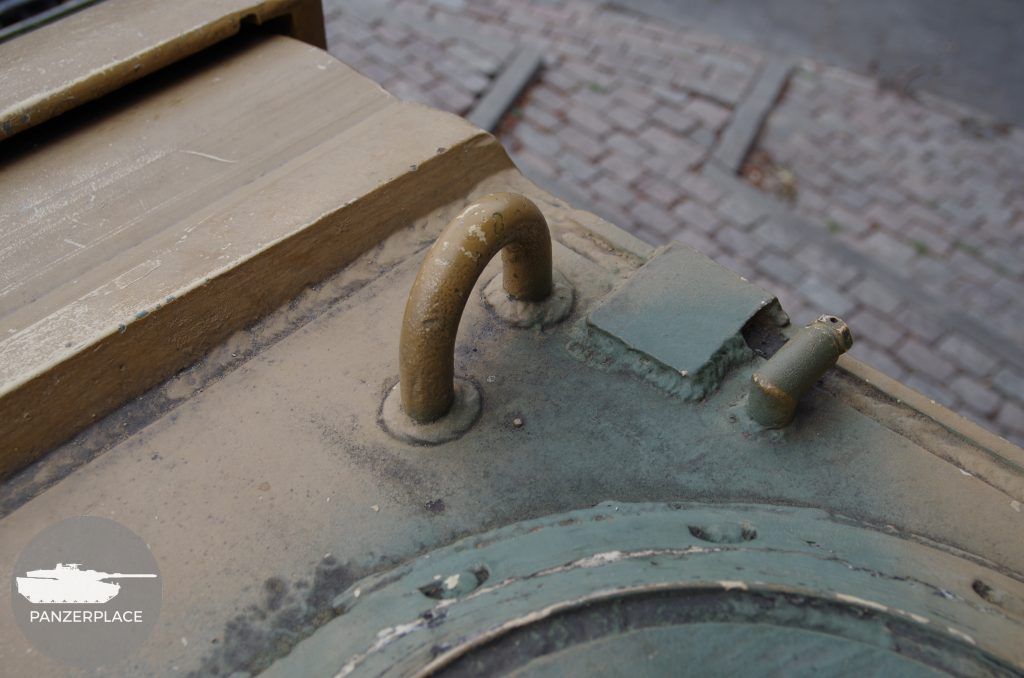
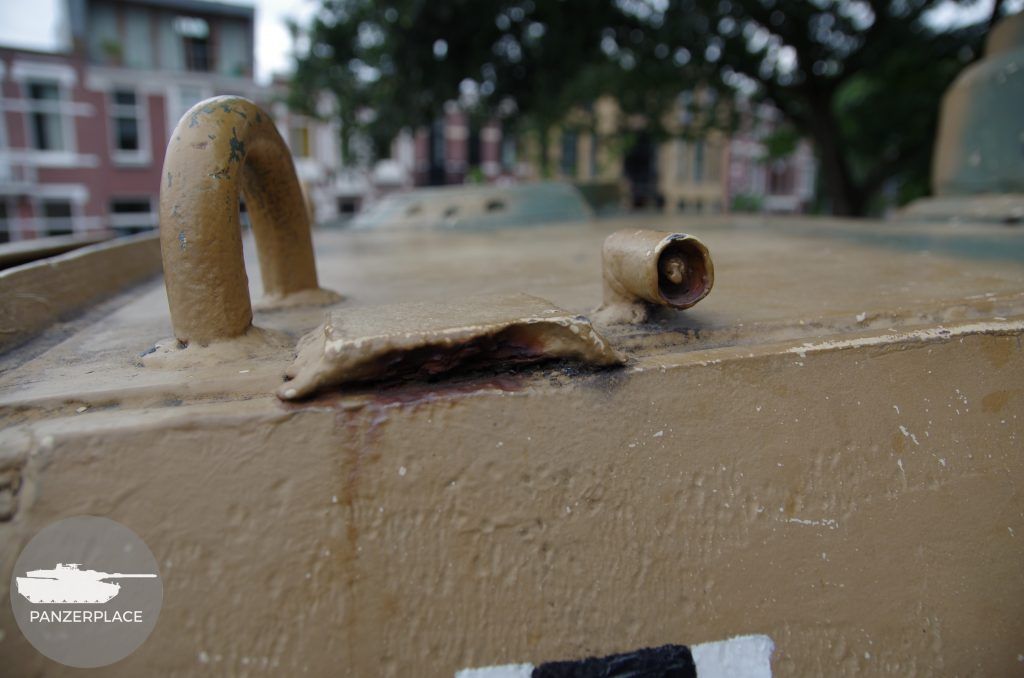
Here follow some more photos of the turret;

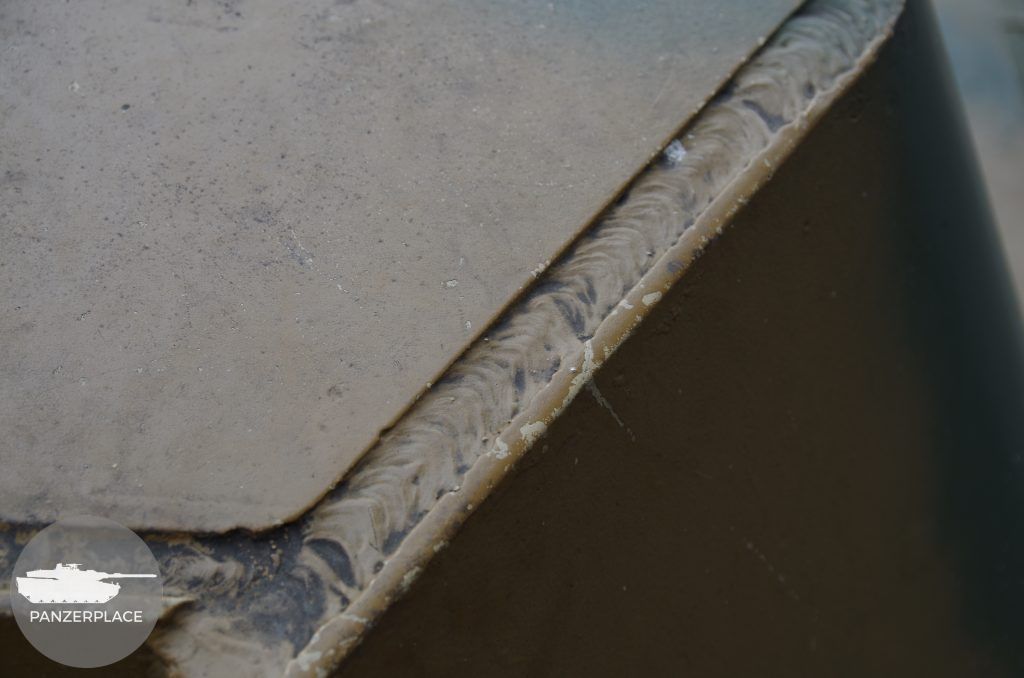
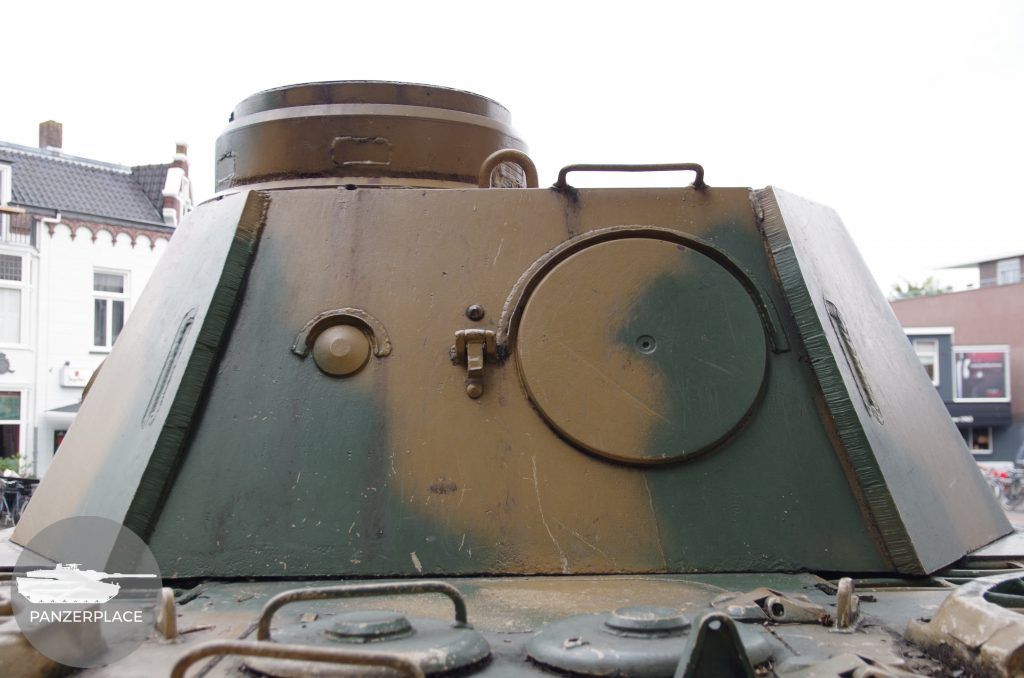
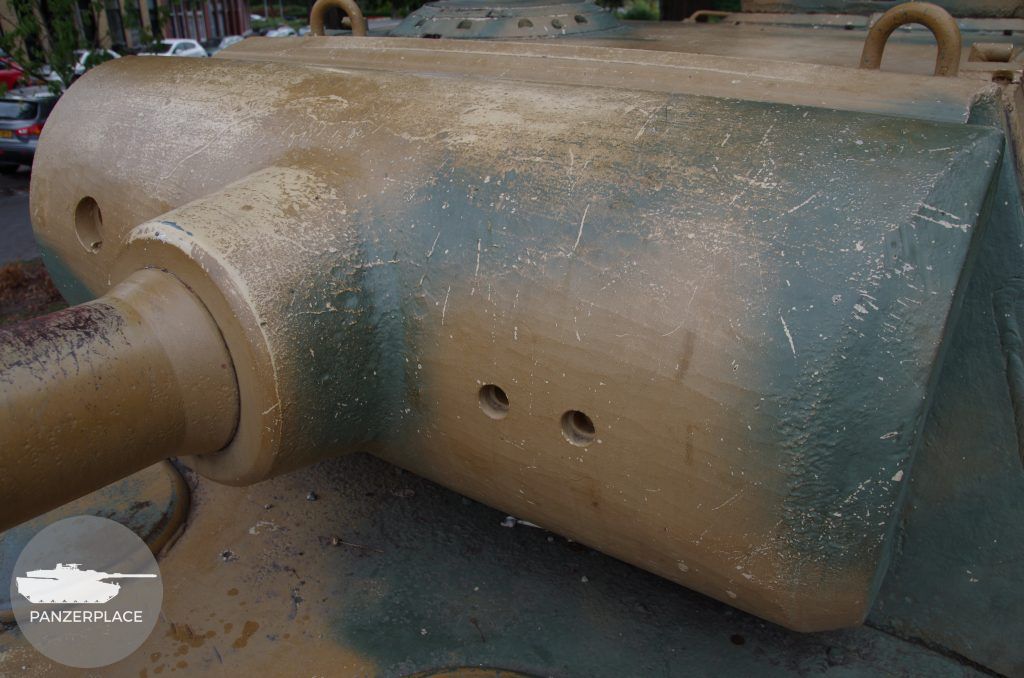
Suspension
The project eventually leading to the Panther tank had some very strict requirements around the suspension; for an effective moving weapon platform should be well stabilised. This lead to the use of the revolutionary Doppeldrehstabfederung (Double torsion bar suspension) by Dr. Lehr. The addition of shock dampers (2nd and 7th stations) minimised pitch movements when driving over rough terrain.

The desire to maintain a short wheel base lead to placing all suspension arms very close together. The mechanism of interleaved road wheels (already seen on German half-tracks, the Tiger tank as well as some experimental vehicles) was once again used. On each suspension arm two wheels are mounted equating to 16 road wheels on either side. The rubber tyres were not vulcanised onto the wheels themselves, but instead held in place by a rim bolted down with 16 bolts. Nonetheless, the bolts were unable to properly tighten down the rim which caused the tyres to wander along the rim.. This all meant increased and undesirable wear on the tyres. Later rim revisions therefore sported a reinforced 24-bolt design2. Some maintenance has been done on the suspension of this Panther and therefore some newer 24-bolt rim wheels are present.

Early design 16-bolt rims
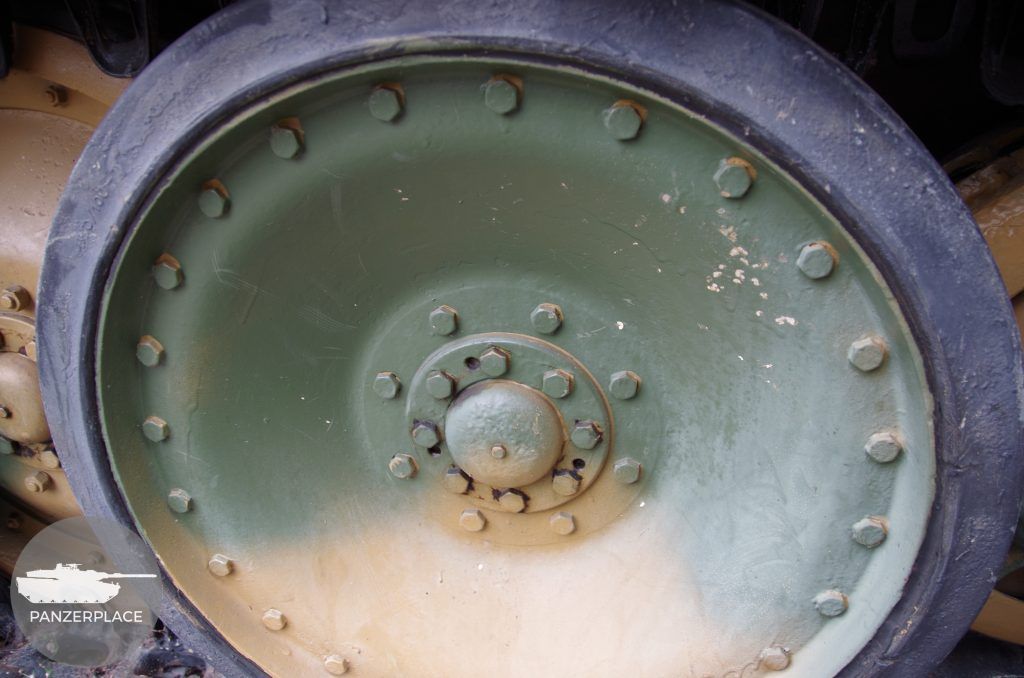
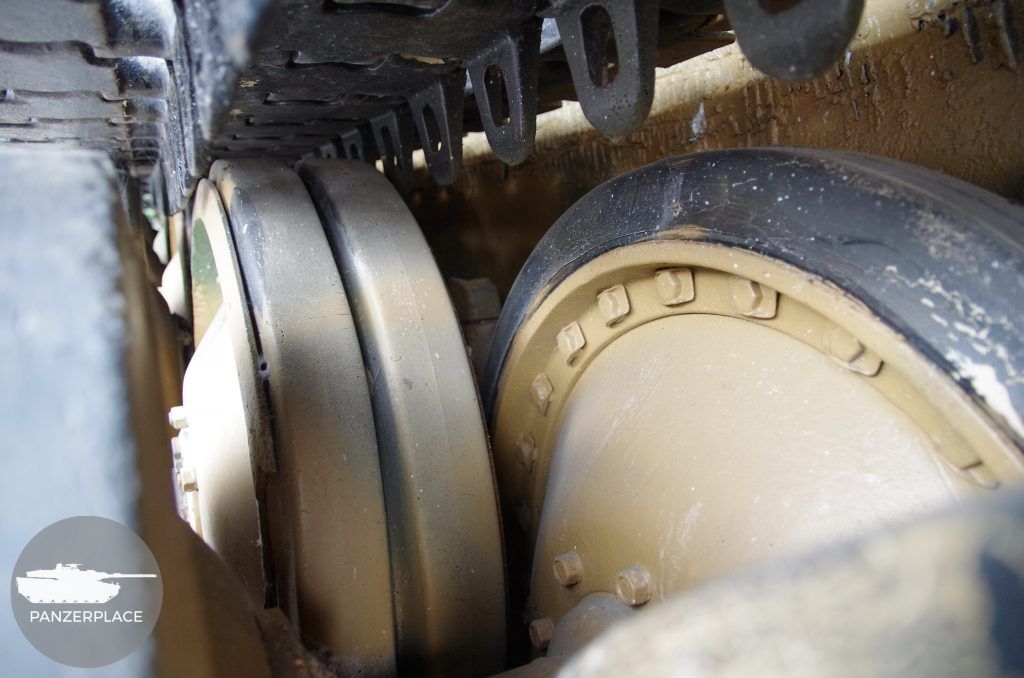
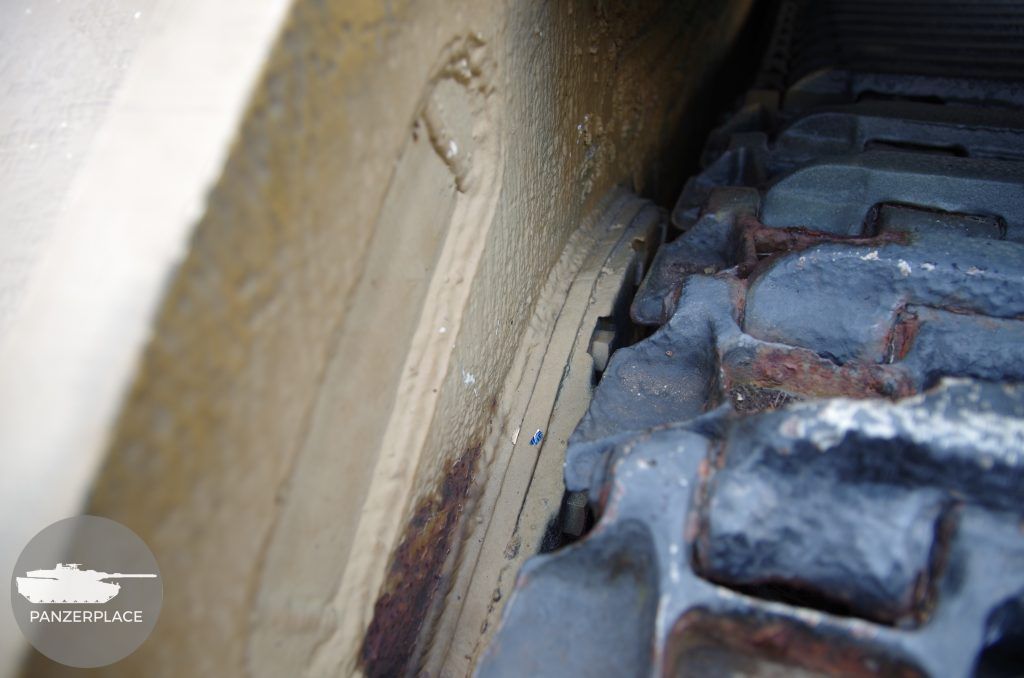
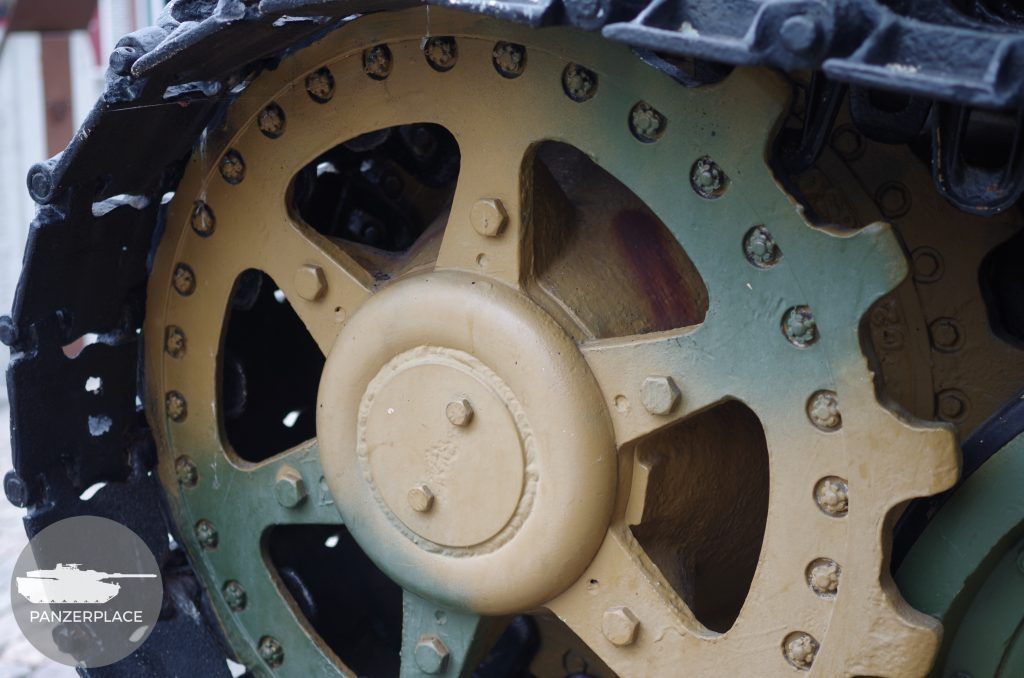
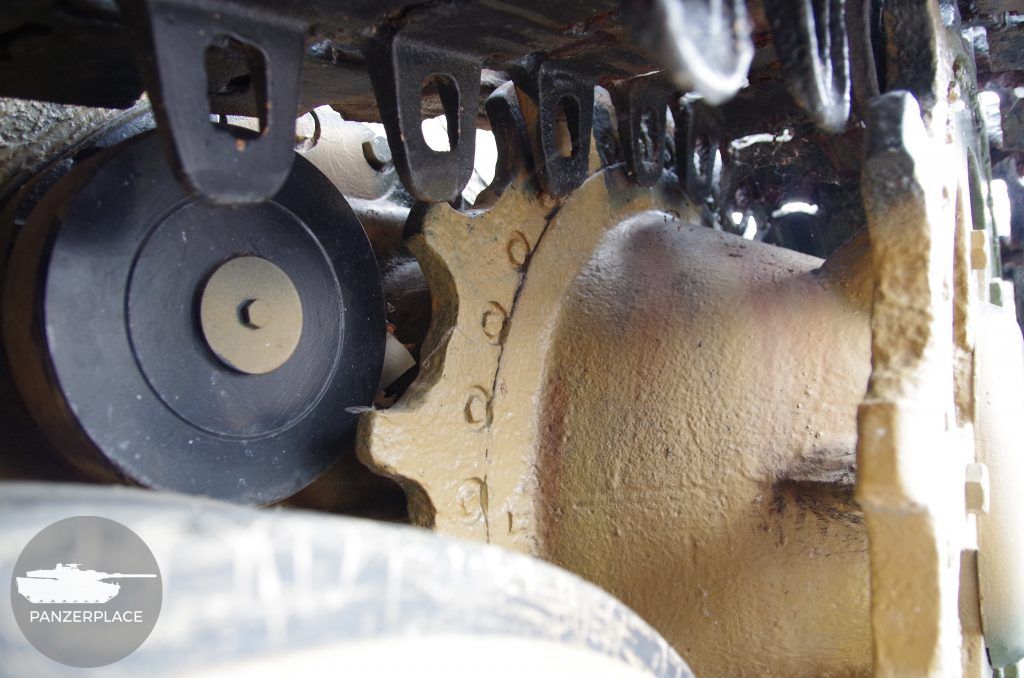
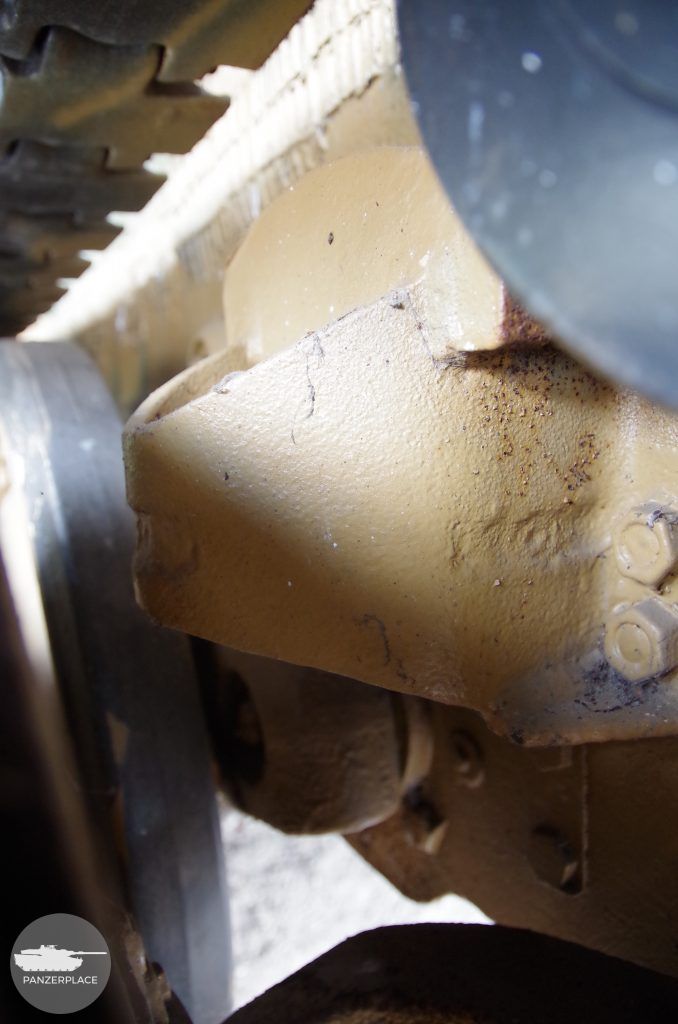
A side view of the tank shows it sags backwards somewhat. It is said that to ‘elevate’ the gun, the tank was loaded with concrete which resulted in suspension damage still seen today.

Hull
Most – if not all – German tank engines used during the Second World War were water cooled. The water circulated through the system was cooled by radiators located at either side of the engine compartment. A fan drew in fresh air through large gratings and then the radiators would cool the water. This particular specimen features a very early style armoured castings protecting the fans. The mould used for casting had originally been designed for the Panther prototype. Since then, however, the lay-out of the engine deck had changed. The original design incorporated individual radiator filler ports into the casting, but these had been dropped in favour of a single port in the middle of the engine deck. The circular port has been cut off of the castings, but a piece can still be seen. Below is a reconstruction of what the complete piece would have looked like.

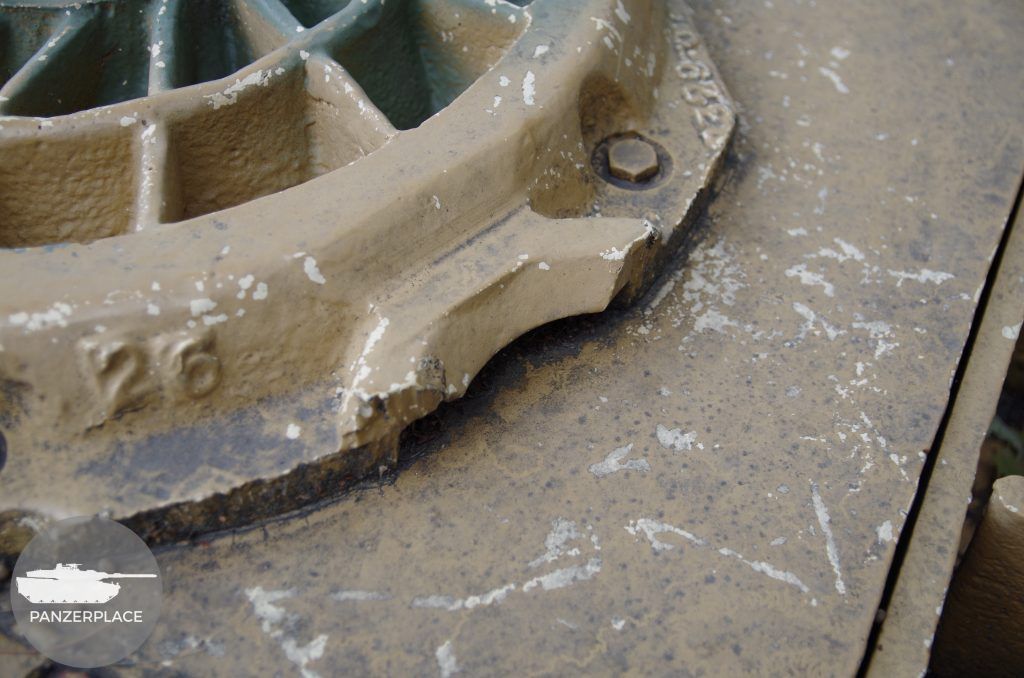
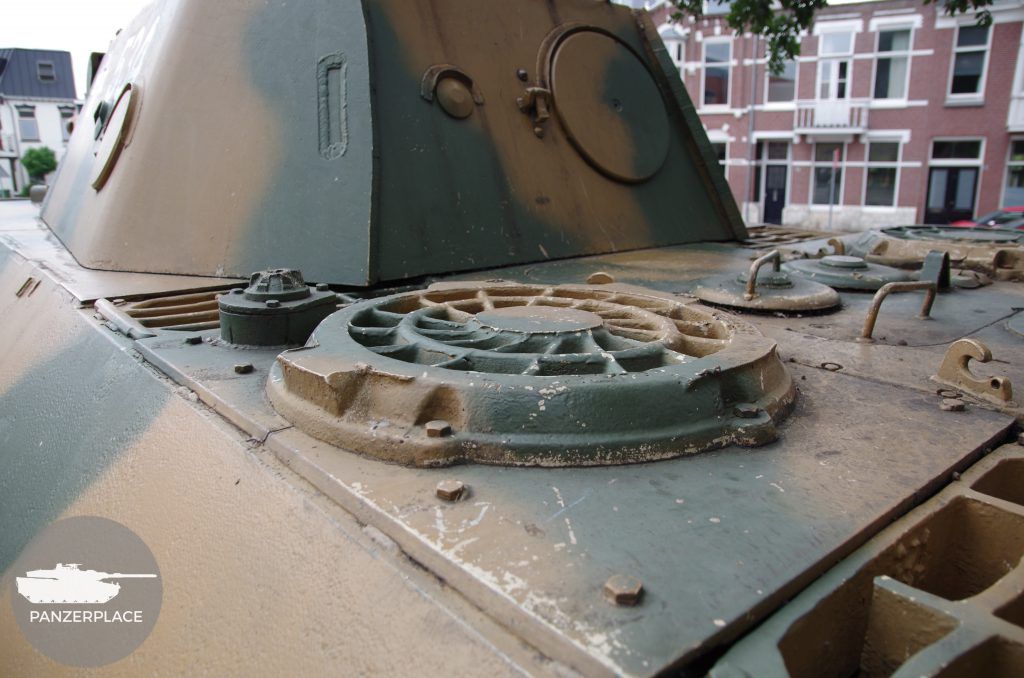
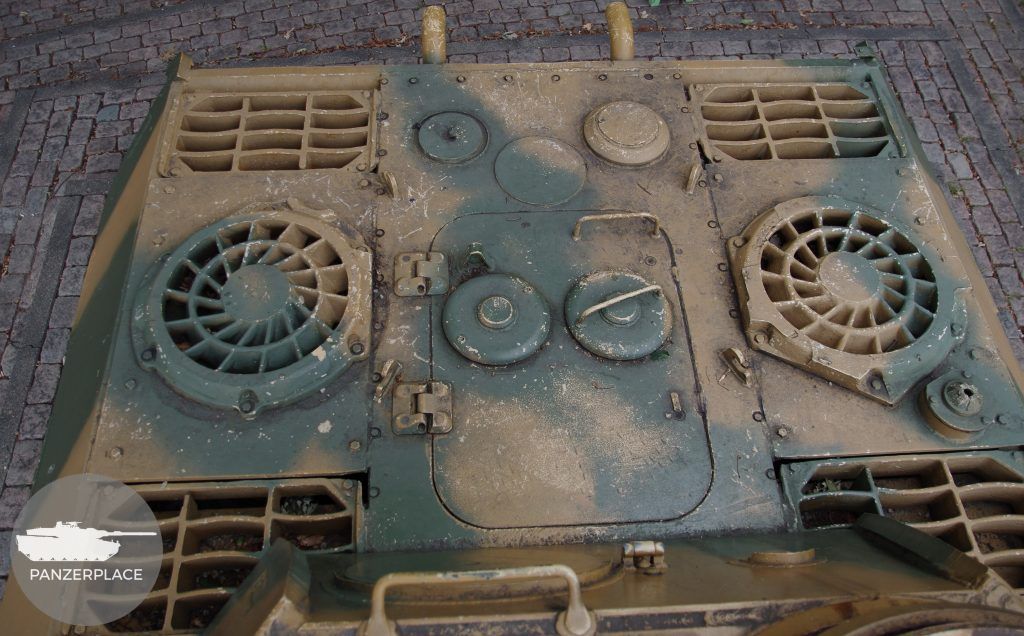
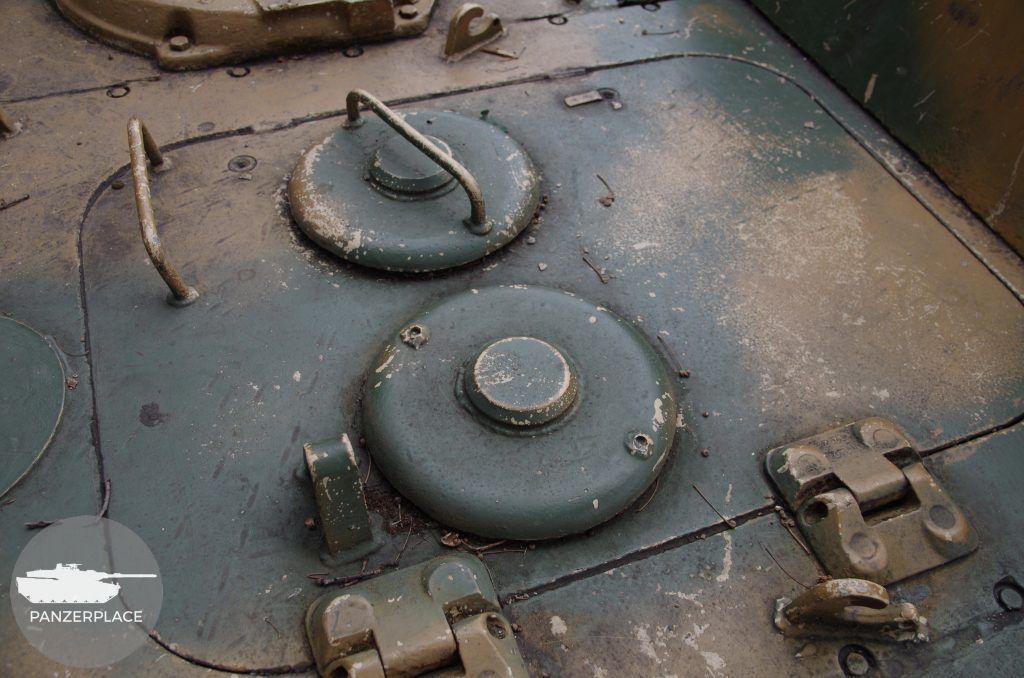
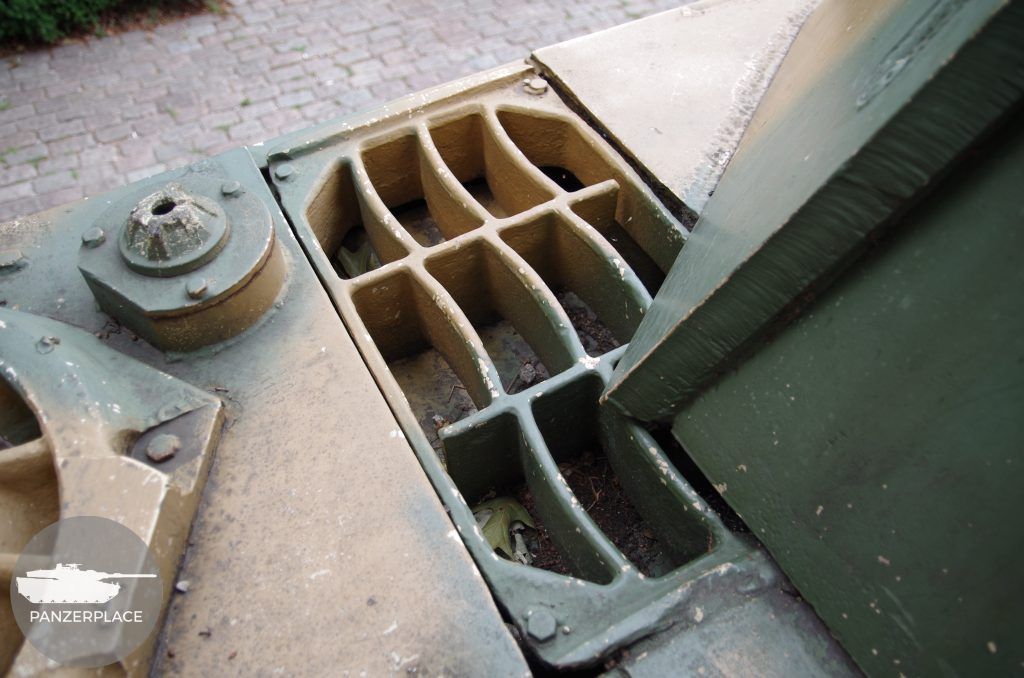
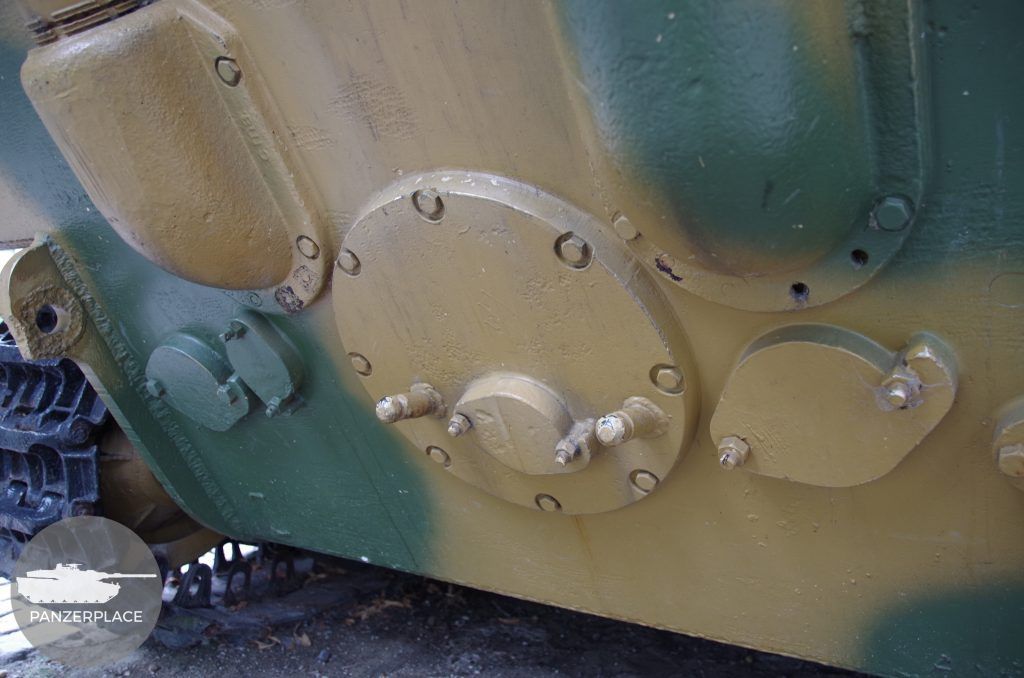
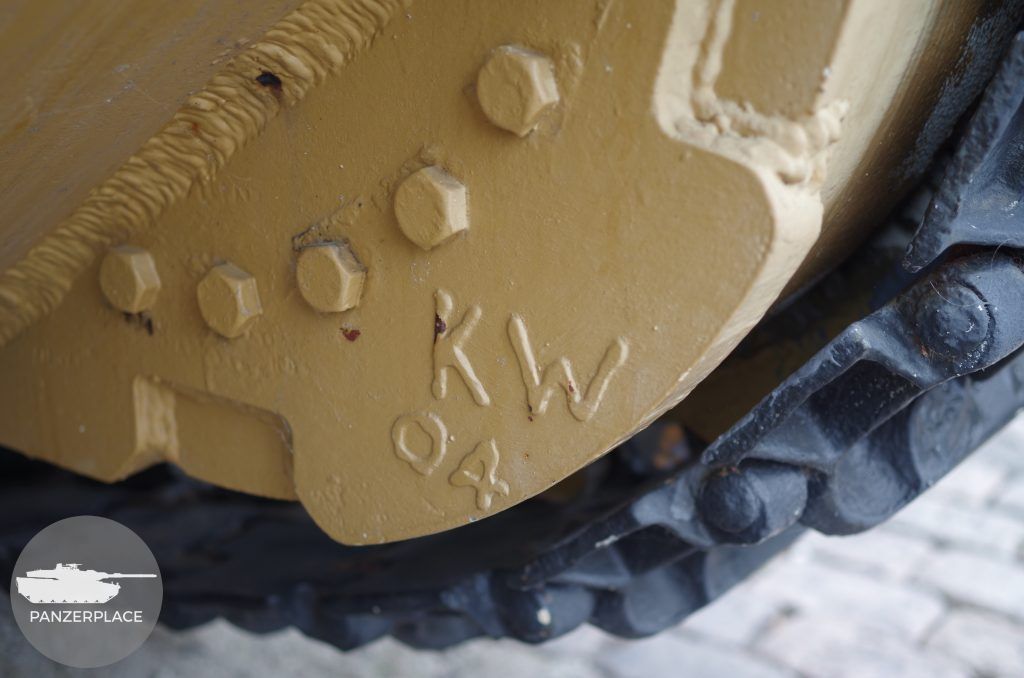
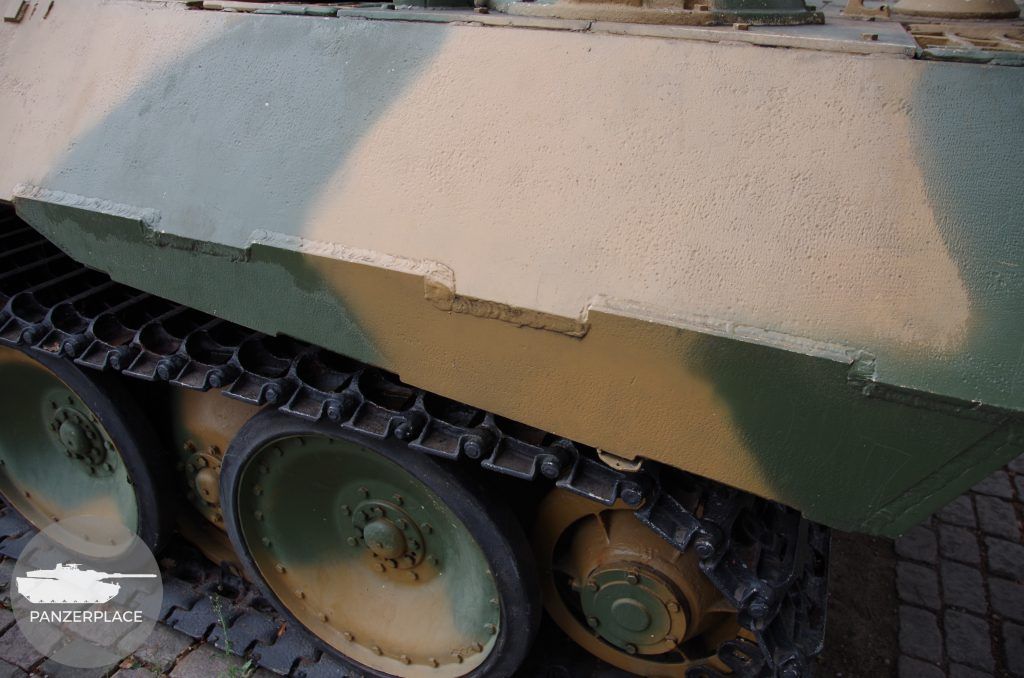
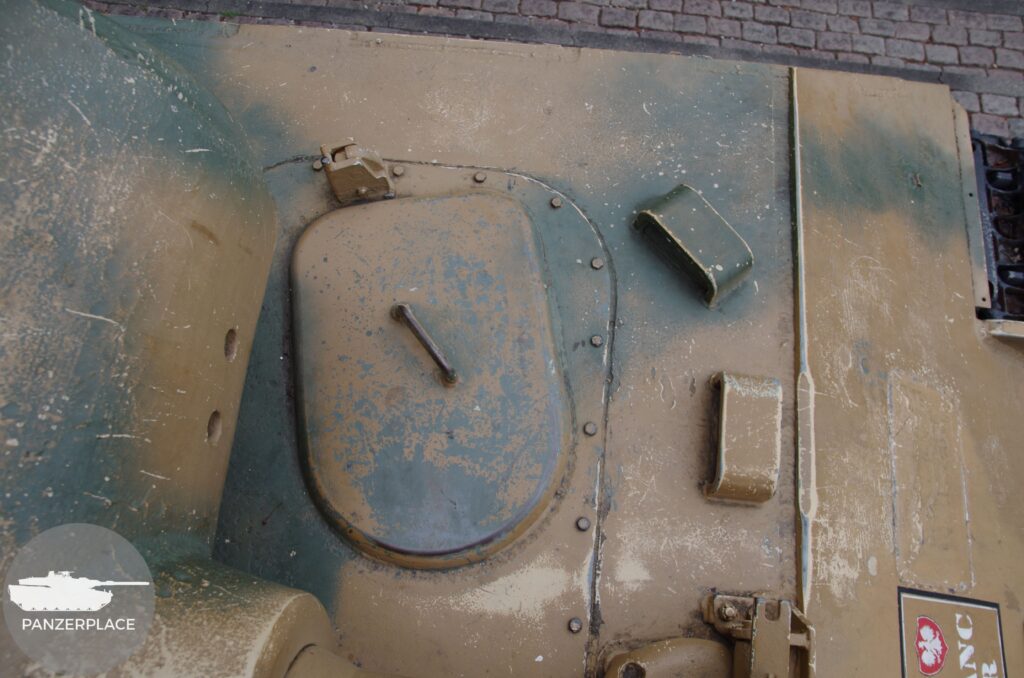
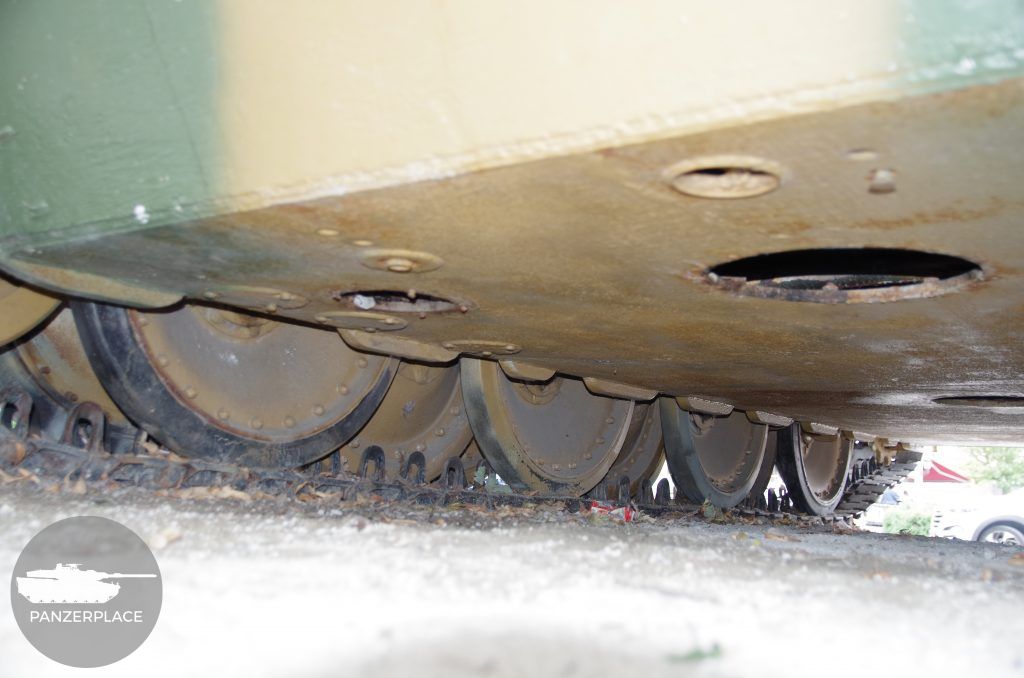
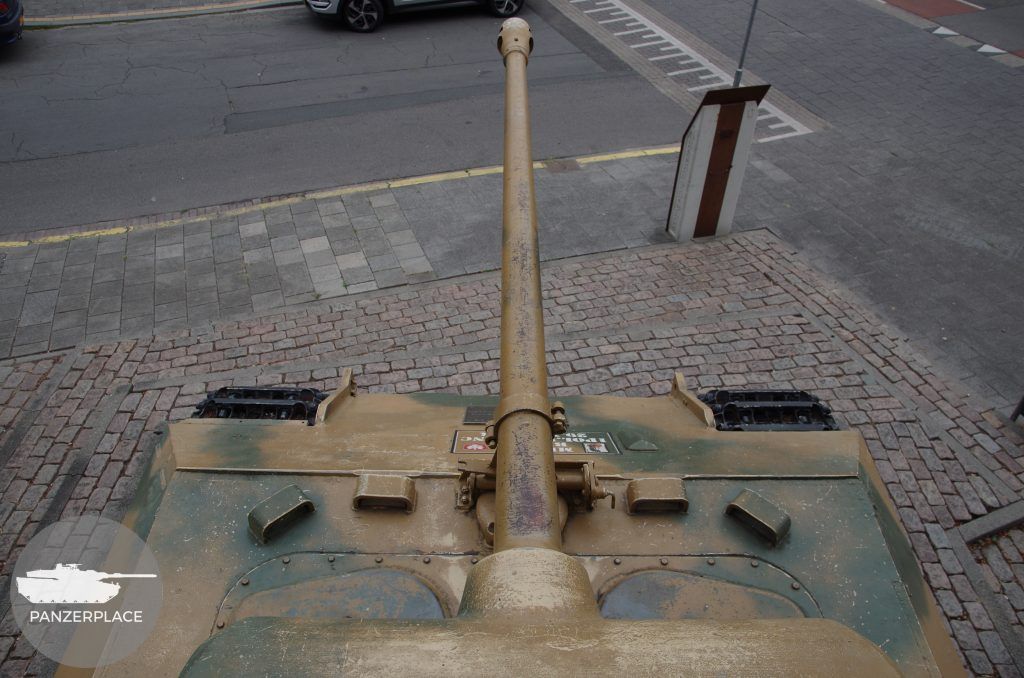
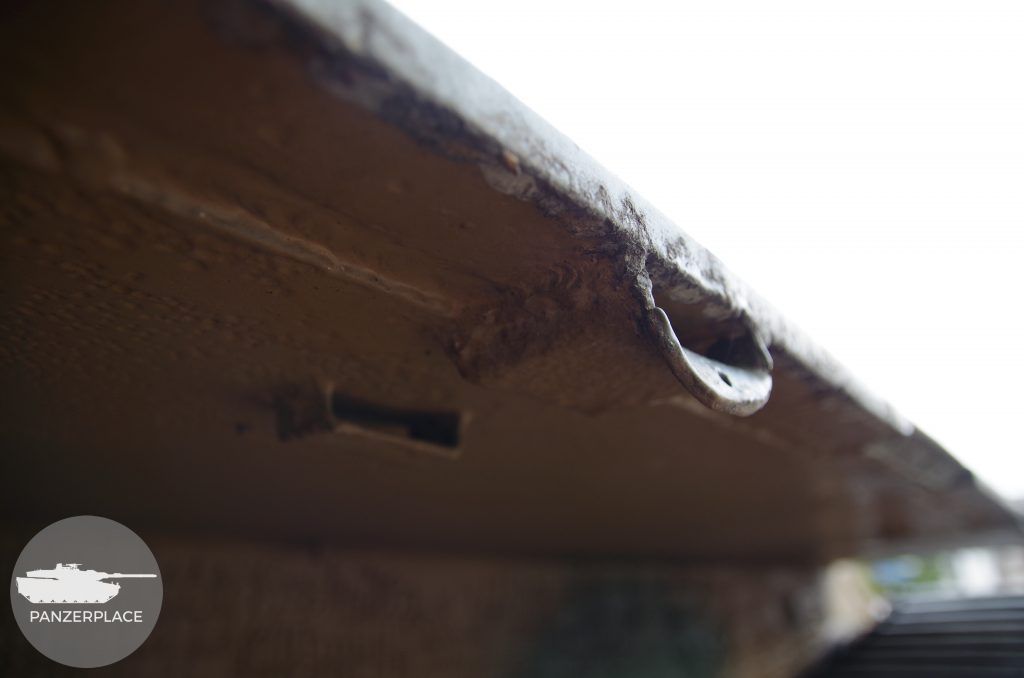
Zimmerit
Although Zimmerit was not yet applied on Panthers produced before September 1943 some remnants of this anti-magnetic paste can be found on the lower hull sides (behind the suspension). The photo below, taken while the tank was still on its way to Breda, clearly shows the Zimmerit application. Starting in November 1943 Panthers without a coating of Zimmerit were to receive one applied by a field maintenance unit.

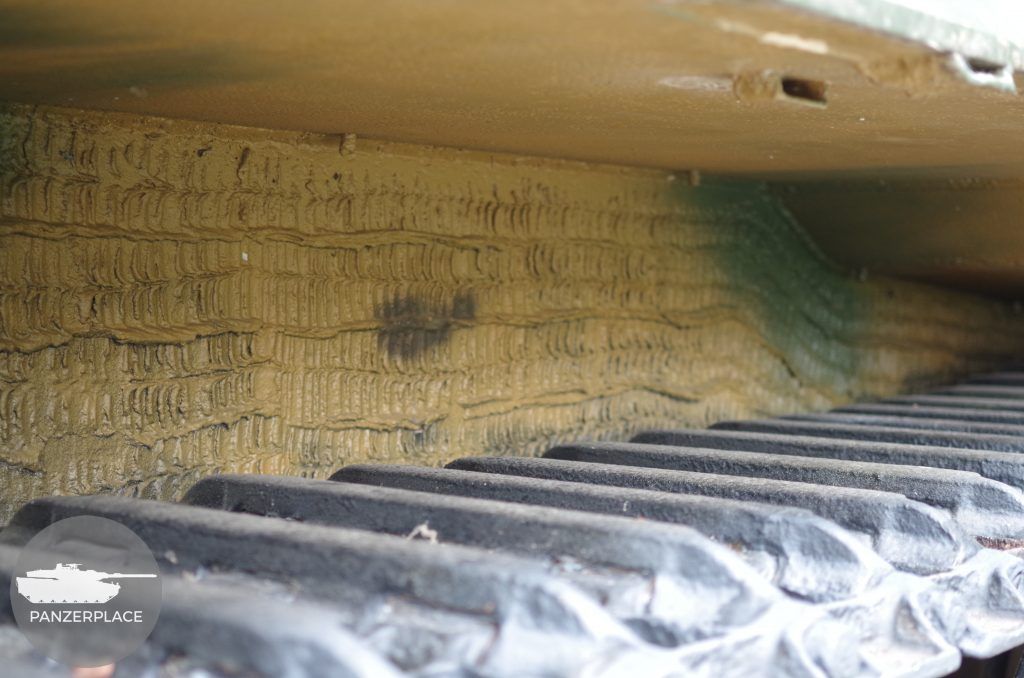
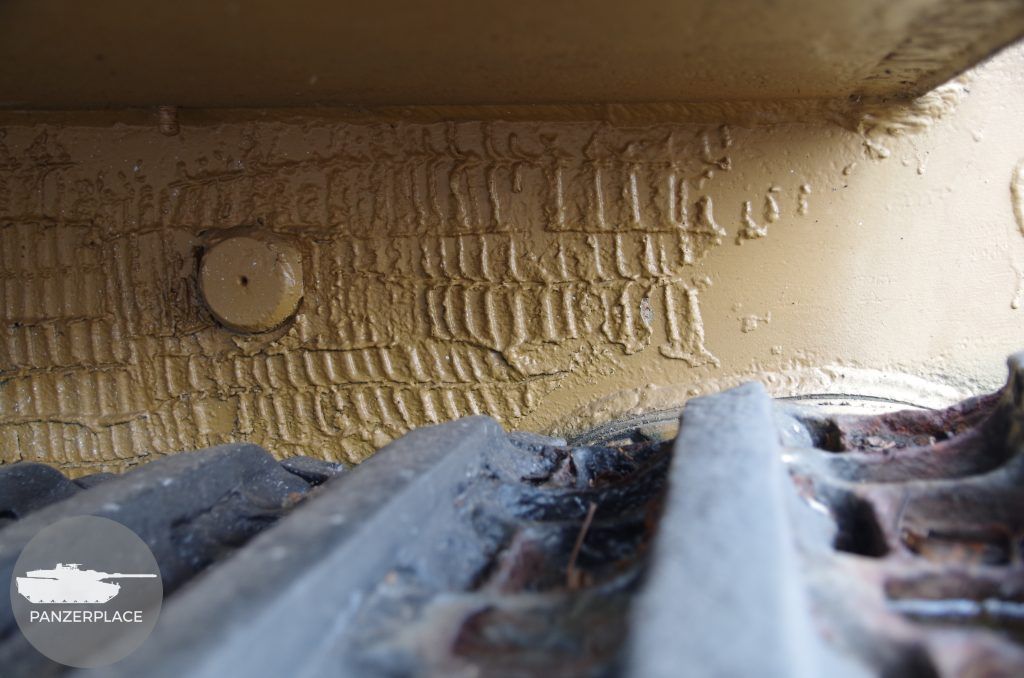
I hope you liked this extensive article about the Breda Panther.. stay tuned for more walk-arounds. Bye! 🙂
- [1]W. Kinkert, “Sporen van een oorlog : zorg om oud-strijders : oorlogsgraven en -monumenten in Breda 1944-1964 ,” in Jaarboek van de Geschied- en Oudheidkundige Kring van Stad en Land van Breda, Breda: Geschied- en Oudheidkundige Kring van Stad en Land van Breda “De Oranjeboom,” 1994, pp. 173–204.
- [2]F. Bogdanowicz, “CZOŁG PANTERA W BREDZIE (tłumaczenie),” SLADAMI DYWIZJI, vol. 14, no. 27, p. 44, 2015.
- [3]A. Bugaj, “In het voetspoor van de Polen,” Vereniging 1e Poolse pantserdivisie Nederland, 2004. [Online]. Available: http://www.vereniging-1epoolsepantserdivisie-nederland.nl/jaargang-2004.html. [Accessed: 24-Sep-2018]
- [4]E. Eberl, “The last ones of their kind,” Panther1944, 03-Feb-2015. [Online]. Available: http://www.panther1944.de/index.php/en/sdkfz-171-pzkpfwg-panther/die-letzten-ihrer-art-49277. [Accessed: 26-Sep-2018]
- [5]“Surviving Panther tanks,” Surviving Panzers, 17-Aug-2018. [Online]. Available: http://the.shadock.free.fr/Surviving_Panthers.pdf. [Accessed: 26-Sep-2018]
- [6]T. L. Jentz, Germany’s Panther Tank. Schiffer Pub Limited, 1995.
- [7]F. Köhler, Panther. Ülzen: Schneider Armour Research, 2014.
Footnotes
- It should be noted that early Ausf. A models also still feature the letterbox MG flap, but can be told apart by their redesigned turret.[↩]
- A practical solution to tighten the bolts using a pressure operated tool at the assembly plants was suggested. This would, however, inhibit crews from changing tyres in the field without the appropriate tools. Therefore, a design using more bolts was introduced instead.[7][↩]


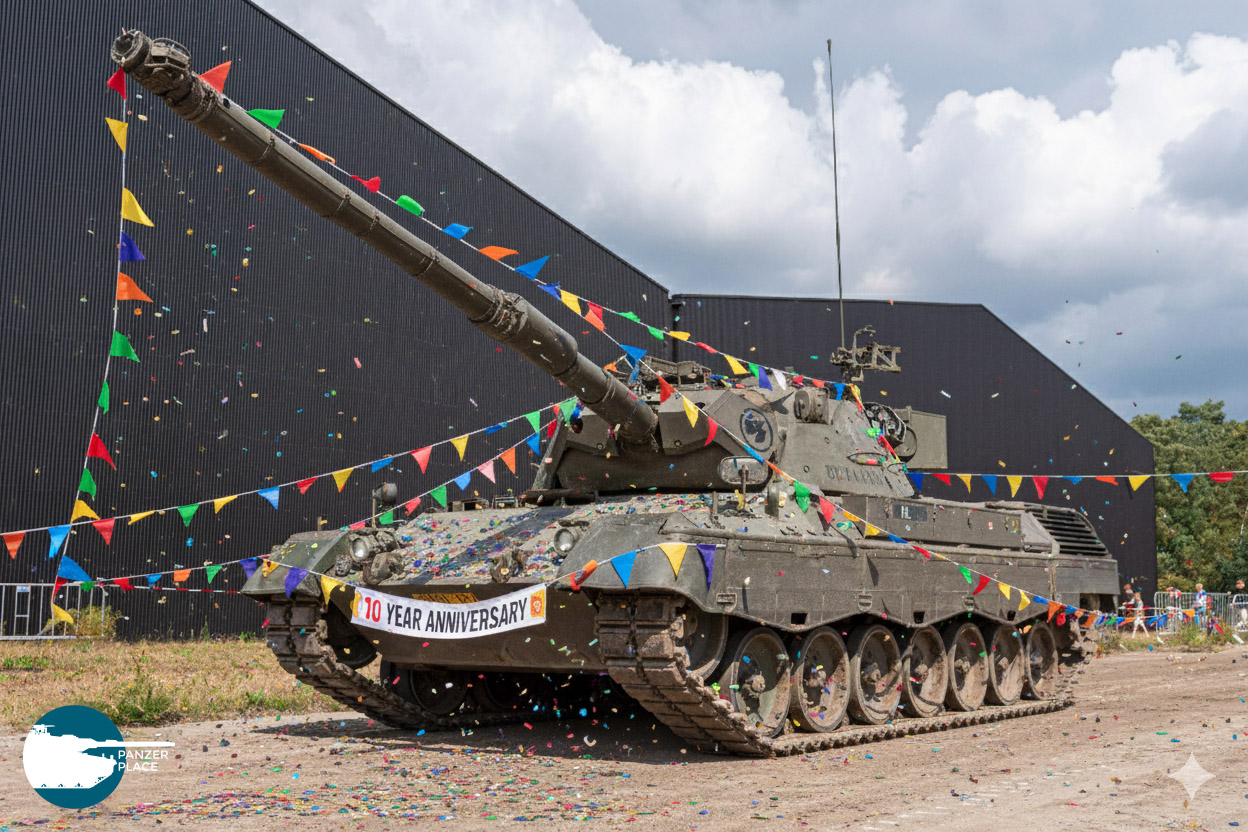

Leave a Reply